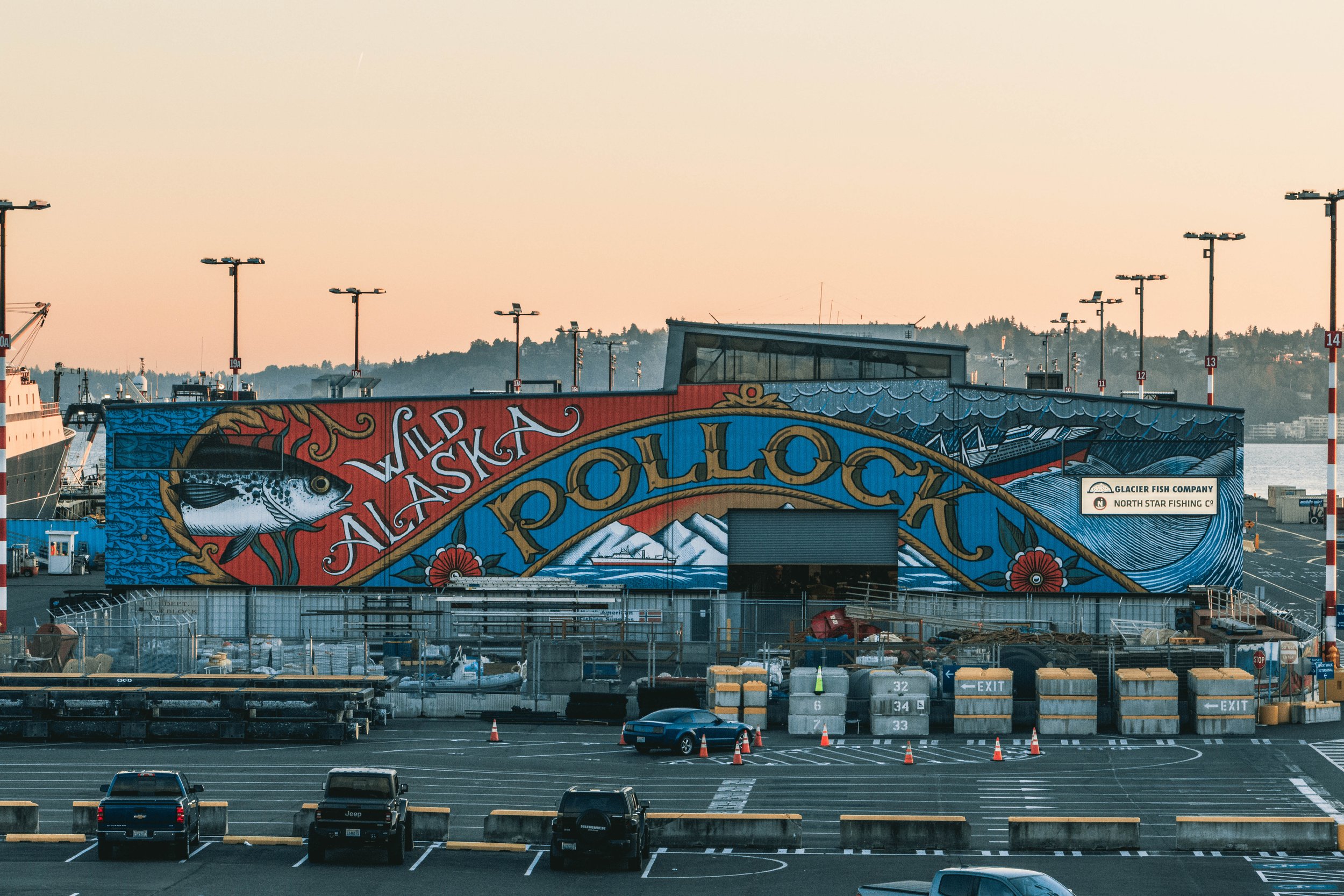Alaskans to Council: The Bering Sea is an ecosystem, not a pollock factory
Terminal 91 in Seattle, WA where several trawl vessels dock when not fishing in Alaskan waters.
ANCHORAGE—As the North Pacific Fishery Management Council convenes in Anchorage for its April meeting, SalmonState delivered more than 700 comments from Alaskans and concerned citizens urging the council to take meaningful action to address the pollock trawl fleet’s catching and wasting of chum salmon, Chinook salmon, halibut, crab and other species. While nearly every other sector of Bering Sea-reliant fisheries suffers — traditional fishing has been shut down; small boat fisheries are closed; crab fisheries are closed — the council’s inaction means trawling, the largest, most wasteful fishery, continues full steam ahead with the catching and wasting of those same species.
“The Bering Sea is an ecosystem, not a pollock factory, and it’s past time it be managed that way,” said SalmonState executive director Tim Bristol. “Traditional, subsistence, small-boat and directed fishermen should not be bearing the burden of conservation for a problem they did not create while the pollock trawl fleet continues with business as usual.”
Over the last 10 years, trawlers have bycaught and largely discarded 141 million pounds of salmon, crab, halibut and other species each year, on average. That’s more than a billion pounds in less than ten years.
In 2021, the pollock trawl fleet caught 545,883 chum salmon. While the trawl fleet talks about the percentage originating from western Alaska rivers — about 9.4% — the actual number is far from small, at about 51,510. That’s just one year, as returns slump, after decades of trawl bycatch. Those 51,510 chum salmon were also caught in a year that Yukon-Kuskokwim traditional fishermen were allowed NO fishing, and smokehouses and freezers stood empty.
A recent report revealed that midwater or “pelagic” trawl nets, which are allowed to fish in sensitive areas closed to crab fishermen during molting season, actually drag the bottom up to 100% of the time, potentially leading to high unobserved mortality.
The council is the body that guides decisions on pollock trawl fleet management, including their bycatch of other species and impacts to fish habitat from dragging gear along the ocean floor. Its majority is composed of people with an economic interest in the trawl industry. It has zero Tribal representatives. In recent years, public attention and anger over the factory trawl fleet’s catching and wasting of declining species has grown. From Bethel to Prince of Wales, Alaskans cite trawl bycatch as a primary salmon concern.
The council will meet April 4-11 at the Anchorage Hilton.
Rep. Mary Sattler Peltola is hosting a listening session at the Hilton on April 6 from 8-9 p.m.

